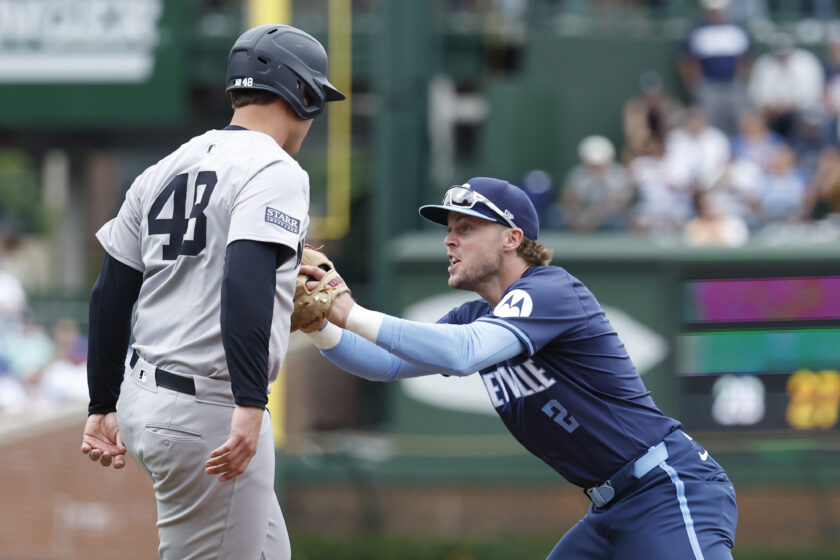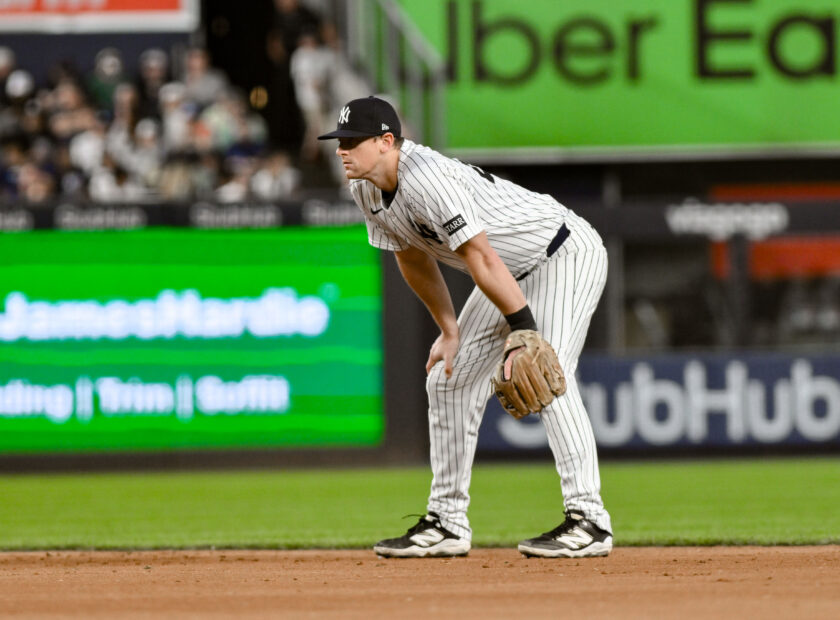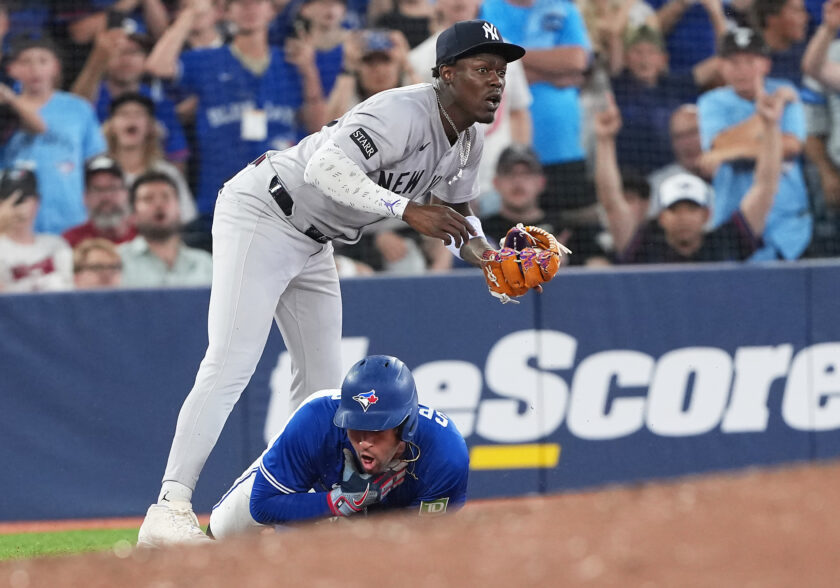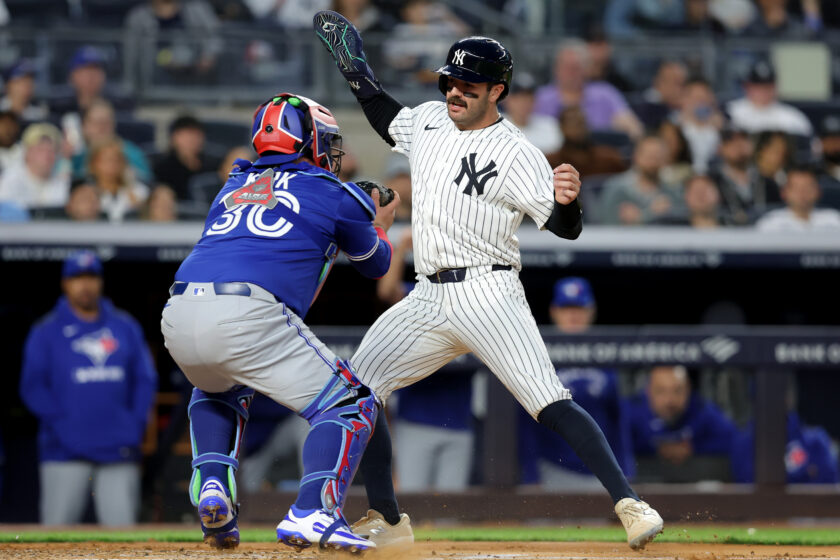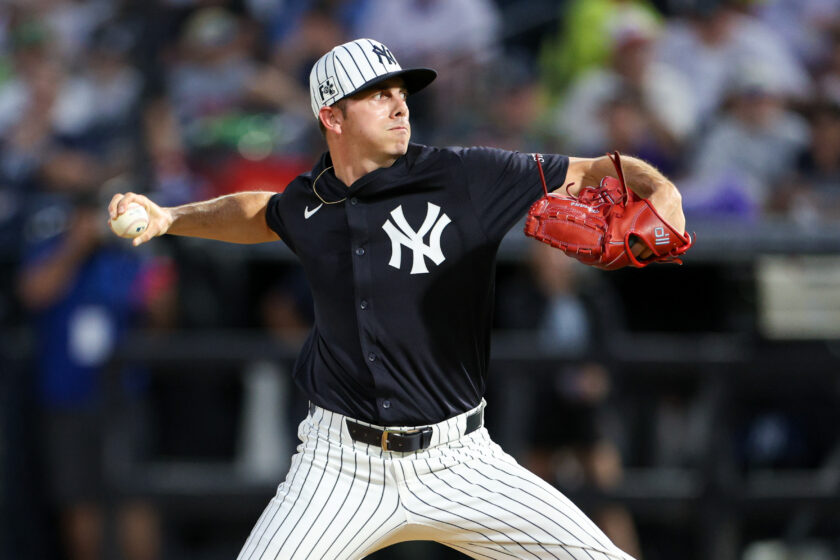Surgery in 2018 derailed Chance Adams’ New York Yankees career

Now that Chance Adams is no longer a part of the New York Yankees, it’s time to discover what went wrong for the once highly-touted pitching prospect.
[sc name=”Thomas Hall Banner” ]Just one week after he was designated for assignment, Chance Adams was sent to the Kansas City Royals in exchange for prospect Christian Perez.
After spending five seasons within the New York Yankees‘ organization, the 25-year-old will now attempt to rejuvenate his career in Kansas City.
Unfortunately for Adams, the former No. 2 top prospect hasn’t been able to recreate any of the success he endured during the first three seasons of his professional career. During the 2015 season, the right-hander was selected by the Yankees during the fifth round of the MLB Amateur Draft.
Over his first three minor league seasons, Adams quickly surged through the Yankees’ minor league system and reached their Triple-A squad during the 2017 campaign. During that season, Adams completed 115.1 innings and produced a 2.89 ERA, 3.76 FIP, 4.06 xFIP, 1.08 WHIP, .194 OPP AVG, 22.3% strikeout rate, 9.3% walk rate and a 7.3% HR/FB rate with the Scranton/Wilkes-Barre RailRiders.
Following his impressive 2017 season, Adams required offseason surgery on his pitching arm to remove some bone chips from his elbow. Since his procedure, Adams has failed to replicate those outstanding results in each of his last two seasons.
During the 2018 season, Adams threw 113 innings and recorded a miserable 4.78 ERA, 4.87 FIP, 4.23 xFIP, 1.41 WHIP, .235 OPP AVG along with a 13.6% HR/FB rate as well. While Adams didn’t sustain a decline in his strikeout rate, his walk rate did increase by 2.4% from 2017. Adams also suffered a significant rise with his HR/FB rate, as it rose 6.3% in 2018.
The right-hander’s struggles continued through his 2018 season when he also made his MLB debut. Adams made three terrible appearances with the Yankees before being sent back down to Triple-A. During that span, Adams created an awful 7.04 ERA, 8.77 FIP, 6.05 xFIP, 1.57 WHIP, .267 OPP AVG, 11.8% strikeout rate, 11.8% walk rate, 27.3% HR/FB rate along with a -0.2 fWAR.
Then, there was this past season, when Adams continued to struggle on the mound once again at both Triple-A and at the major leagues.
After spending the first two months of the season in Triple-A, Adams was recalled by the Yankees and made 13 appearances from out of the bullpen before the end of the season. During those outings, Adams struggled mightily by generating an 8.53 ERA, 6.53 FIP, 5.69 xFIP, 1.97 WHIP, .351 OPP AVG, 20.0% HR/FB rate and a career-worst -0.3 fWAR through 25.1 innings pitched.
Prior to his surgery in 2018, Adams was extremely successful with his fastball and slider. Although, both of those pitches have since faltered during his last two seasons. During his first three seasons, Adams’s fastball ranged between 93-95 MPH. Since his operation, Adams’ heater now sits in the low-90s.
Along with a drop in velocity, Adams’ fastball was also pounded this past season. During his 13 appearances with the Yankees, the 25-year-old’s heater was utilized 57.2% of the time and produced a .329 AVG, .287 xAVG, .657 SLG, .566 xSLG, .441 wOBA and a .392 xwOBA as well.
In addition, Adams has also struggled to control his fastball since his surgery. Before the 2018 season, Adams would attack the outer parts of the strike zone with his heater. Since then, the right-hander hasn’t been able to keep his fastball away from the middle of the zone.
Adams also suffered a 0.7-inch drop in his fastball’s horizontal movement this past season, which has also plagued its effectiveness since the 2018 campaign.
Despite these concerning results from Adams’s four-seamer, its spin rate was ranked in the 87th percentile in 2019. Meaning, there’s still a little hope for his once-dominant fastball to return in the future.
As for his slider, Adams’s lack of control with his strikeout pitch has played a major factor with the decline of his strikeout rate. Since the removal of bone chips from his elbow, Adams’s breaking ball hasn’t been as sharp or tight compared to its earlier version.
Over the last two seasons, his slider has been positioned much higher in the zone than usual. This past season, Adams’s breaking ball suffered a 0.8-inch increase in its vertical movement. While 0.8 may not seem like much, it has caused Adams to rely on his curveball more than his slider.
[sc name=”Cole Train T-Shirt” ]Despite his curveball’s spin rate ranking in the 94th percentile, it struggled to create a strikeout rate higher than 17.6% during this past season.
Based on the numbers above, it’s clear that Adams’ surgery after the 2017 season has played a major impact on the future of his career. While the Yankees aren’t fully responsible for Adams’s failures, their development staff is partly to blame for the bone chips that were removed a few years ago.
Normally, bone chips are caused by the overuse of a person’s elbow and arm. Before the 2016 season, Adams had never thrown more than 94 innings in a single season. Still, Adams threw 127.1 innings in 2016 and 150.1 innings in 2017.
Since Adams endured a massive spike in his innings pitched during both 2016 and 2017, that added stress on his arm could have definitely caused those loose bodies of bone to form in his elbow.
Adams was also utilized from out of the bullpen during the entire 2015 season. The young hurler completed 59 innings as a reliever in college during 2015 and threw 35.1 innings from out of the bullpen after he was drafted by the Yankees later that season. Entering the 2016 season, the Yankees moved Adams into the starting rotation but forced him to throw for more innings than he probably should have.
[sc name=”Bleacher Creatures Embed” ]If Adams were to be moved back to the bullpen next season, he may be able to recapture his mid-90s fastball along with his wipeout slider.
Since the Yankees rushed Adams into becoming a starting pitcher, he’ll likely be forced into a multi-innings reliever role for the remainder of his career.

